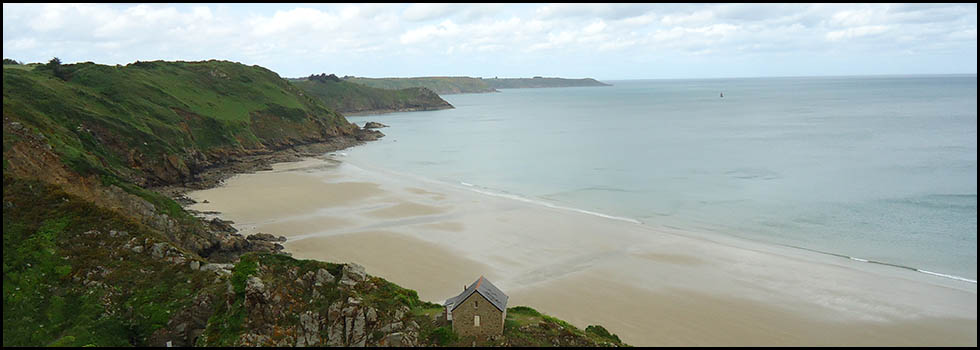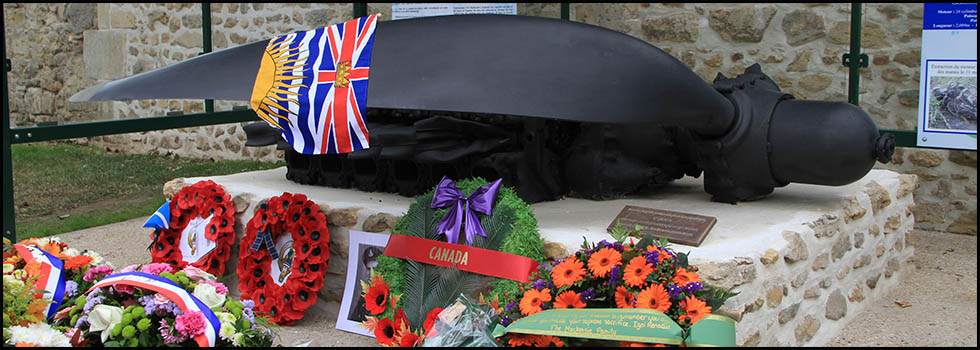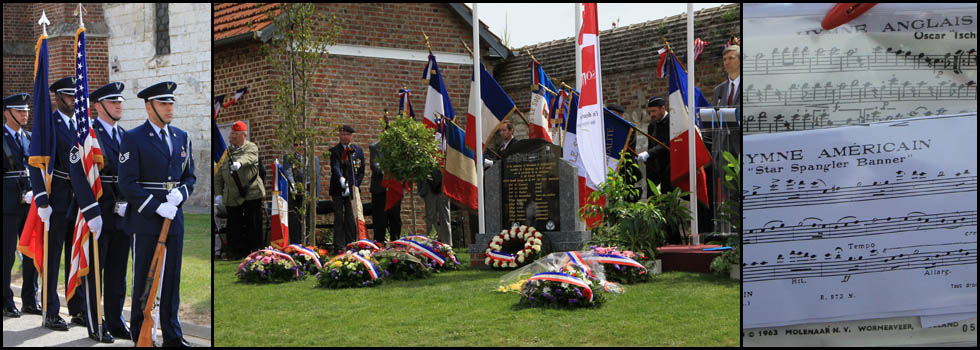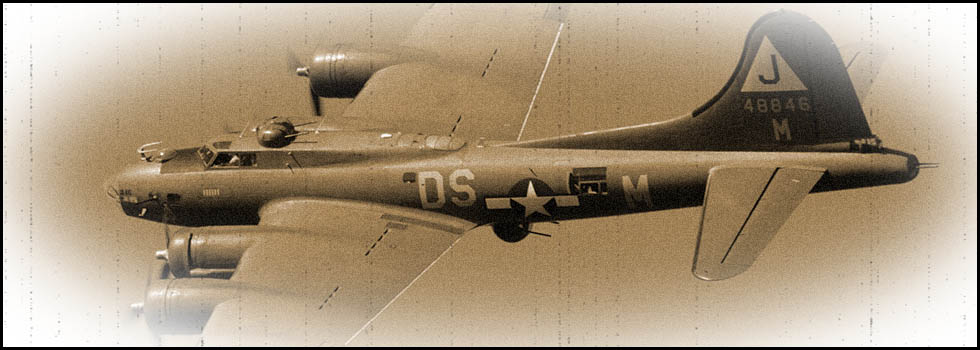1st to 3rd September 2017
Campremy (Oise)
Visit of a delegation of the "Defense POW/MIA Accounting Agency"
Four years after their first visit, we had once more the great honour of receiving and accompanying a delegation of the “Defense POW/MIA Accounting Agency”. The noble mission of this American organization, mandated by the Pentagon in Washington D.C., is to deploy research teams of historians and scientists to try to find the remains of more than 82,000 soldiers, airmen, sailors and the Marine Corps, still missing during various conflicts. "No one left behind" is the promise made by the Department of Defense to recover those who are today still missing.
Whether during the Second World War, the Cold War, in Korea, Vietnam or Iraq, none of these American servicemen is abandoned and forgotten.
About 16 million Americans served throughout the Second World War. More than 400,000 of them were killed in action. Approximately 73,000 are still without a grave, including 20,000 missing airmen, mainly in Europe and during the Pacific War.
The mission of this research team composed of two historians, a forensic archaeologist and an interpreter was again concerned with the case of S/Sgt. James H. Coleman.

Josh Fennell, Historian (on left) and his team
A ball turret gunner aboard the Flying Fortress of the 306th Bomb Group, 8th Air Force, which crashed near Campremy on 11th February 1944, S/Sgt. Coleman was killed at his post during an attack by German fighters over our area. He was a native of Indiana, then 27 years old.
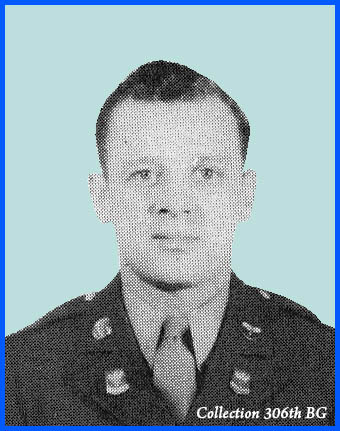
S/Sgt. James H. Coleman
The few bones fragments of his body found in the dislocated wreckage of the aircraft were buried by the Germans in the cemetery of Beauvais-Marissel.
Exhumed in April 1945 by a Commission of the American Army, the remains of S/Sgt. Coleman did not allow to be formally identified. They were subsequently reinterred in the Epinal American cemetery. Still to this day, S/Sgt. Coleman remains among the unidentified soldiers.
According to the survey carried out by the American organization, the four-engined aircraft hit the neighbouring field, crossed the road before ending up by disintegrating. More than 73 years later, many pieces of small debris from the plane are still scattered over a wide area.
For three days, with the necessary authorizations, the American delegation headed by Josh Fennell thus methodically measured and marked the ground into squares. The area was then explored by means of detectors, in search of the slightest clue or object likely to have belonged to the missing airman (pieces of clothing, buttons, dogtag...)
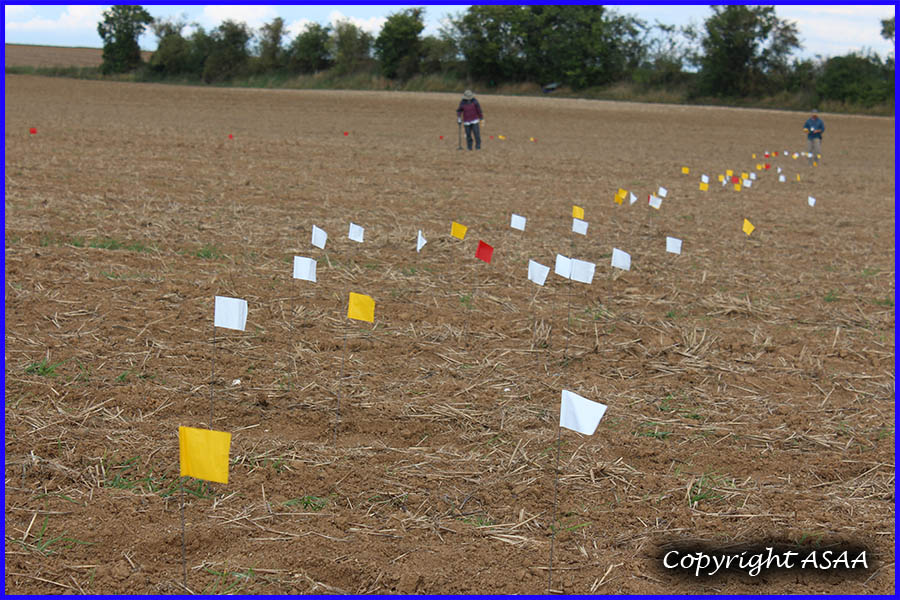
The perimeter of the area of search was quickly marked with numerous small red, yellow and white flags indicating the location of debris of significant importance.
A parachute harness buckle, buttons and pieces of cloth were found and carefully picked up by the researchers. Once back in the United States and analyzed, these important discoveries would perhaps be assured of being uniforms and parachute silk.

The discovery of the parachute buckle further confirmed, if it were necessary, that S/Sgt. Coleman had unfortunately not evacuated the aircraft, unlike the other nine crew members.

The exceptional presence and the reason of the coming of this American research team into our area interested not only the local written press but also, to our surprise, the regional television "France 3 Picardie".

Josh Fennell with the TV reporters of "France 3 Picardie"
The TV report
The information, thus broadcast, has not failed to attract the curiosity of some inhabitants of the region, simply intrigued and appreciative to learn about this willpower of the American government in wanting to find their soldiers at all costs.
These three days of research made it possible to define with greater precision the perimeter where it would certainly be possible to find the remains of S/Sgt. Coleman. The area was mapped and each location where important items were found was accurately noted.
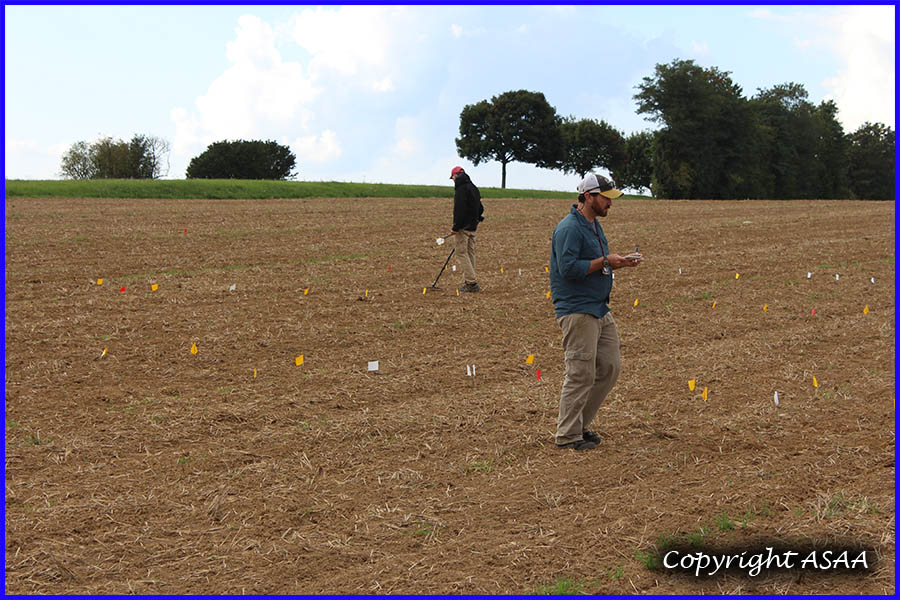
The results of these days of research were transmitted to the headquarters of the Defense POW/MIA Accounting Agency. A program for more thorough excavations, employing much more substantial means, is likely to be established in the near future. The DNA of any discoveries of S/Sgt. Coleman’s bones or teeth, analyzed scientifically and compared with the descendants of his family members, could then allow the airman to rest in a grave bearing his name.
In the days that followed, the investigations of this American delegation on the paths of memory continued in other crash sites, in Picardy and Normandy.

